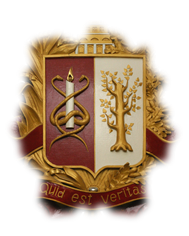Issue: 2016, Vol. 21, No. 2
THE PECULIARITIES OF MORBIDITY AND PHYSICAL DEVELOPMENT IN CHILDREN WHO ARE NOT IN CHARGE OF PARENTS: UPBRINGING UNDER VARIOUS SOCIAL CONDITIONS
- Keywords
- children who are not in charge of parents, orphans, morbidity, physical development, adopting family
- Abstarct
- Objective - to study the peculiarities of health status in children who are not in charge of parents and are adopted or are brought up in children’s house. Material and methods . The authors performed complex examination of morbidity, frequency of various health groups, physical development in 3854 children who are brought up in children’s houses and in 2366 adopted children aged 0 - 18 years; the obtained results of profound follow-up study were used. Results . General morbidity level in adopted children was found to be 2 times lower in comparison with the children from municipal facilities. Psychiatric disorders and behavior problems were diagnosed in adopted children 6,5 times less in comparison with the children from children’s houses (9,1 and 59,3% mainly due to mental retardation - 3,8 and 40,4%, p < 0,001). It may be explained by upbringing conditions and the fact that more healthy children are adopted by families. Statistically significant increase of the frequency of psychiatric disorders and behavior disturbances, diseases of respiratory and urinogenital systems with aging were marked in children of municipal facilities. In contrast to them statistically significant decrease of urinogenital system diseases frequency with aging was revealed in adopted children also the frequency of respiratory system diseases, psychiatric disorders and behavior disturbances increased at the beginning of school attendance and decreased to the adolescent period. I (19,4 and 4,5%, p < 0,001) and II health groups (42,9 and 18%, p < 0,001) were determined in adopted children more often than in children of municipal institutions but III, IV and V health groups (26,7 and 42,3%; 9,5 and 19,8%; 1,3 and 15,4%, p < 0,001) were registered rarely. The deviations of physical development in adopted children were revealed rarely than in children from children’s houses (16,9 and 23,3%, p < 0,001). Conclusions . At all aging periods the most pathology frequency and coexistence were revealed in children of municipal institutions in comparison with the adopted children.


 Филькина
Филькина